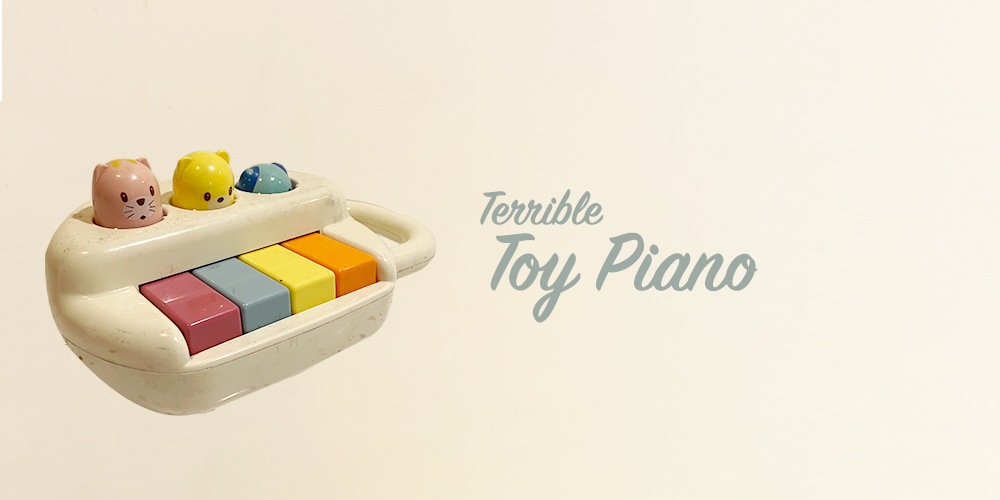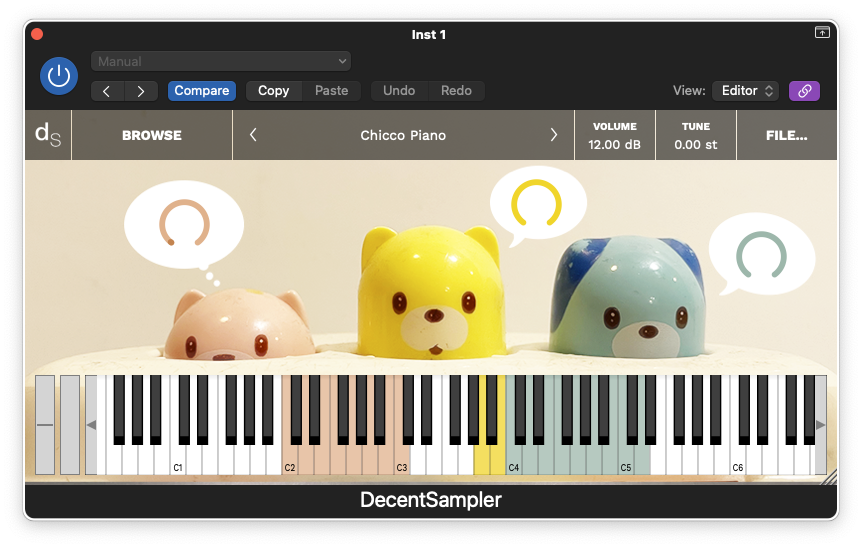Terrible Toy Piano
A kids piano sampled with an iPhone perfect for a horror soundtrack


ByBaardaap
The story
The terrible toy piano is sampled from a four key kids piano found on a flea market. It’s not the best sounding instrument, but what it lacks in sound it makes up in character.
The samples are recorded with an iPhone and consist of one playable octave based on a flex pitched samples, three harmonic sounds and around 15 clickety-clack noises.
I can imagine it being used in horror soundtracks or used in soundfx. Let me know how you’ve used it 🙂
A horrible tune on the Terrible Toy Piano
Interface

Reviews
Cute toy piano
First of all, it's not terrible at all; on the contrary, it's a sweet toy piano along with a tender short collection of percussive sounds. These can be quite useful to give a playful essence to the tracks.
The interface is beautiful, the colors match very well and the controls are sufficient. It is as if the resource is focused on young children.
Simple, cute and endearing. It is, without a doubt, one of the cutest and most tender packs I have ever tasted.
I think 'Terrible' should be spelled 'Brilliant'!
I admit it. I edit .dspreset XML files. I audition the sounds, then copy the file and edit it.
This totally changes the way that I view Decent Sampler virtual instruments - they are all raw material! My only problem is that almost no-one ever responds to my requests to collaborate! (martin.russ@owasp.org)
This apparently 'Terrible Toy Piano' (TTP) is a perfect example! The pitched sounds are definitely in the 'toy' realm (but when music hyper-company Yamaha can put a very posh 'Toy Piano' preset on their hugely popular Reface CP piano, then I say 'legitimised!'), but the sound effects are cool! So what does a code hacker then do?
Well, the pitched sounds have the release click at the end of the sample. I would split it into two samples: one the percussive part, and the other the release click. You then create two lines in a group in DS:
sample... trigger="attack" ...
sample... trigger="release" volume="-30.0dB" ......and now you have the original percussive piano sound, plus a quiet little release sound that happens when you let go of the key.
(Pianobook.co.uk sensibly remove some characters from these text fields, so you will need to add in chevrons etc. to the code fragments that I show here... If you are interested in understanding why they do this, then you might be interested in cyber security...)
Better still, if you edit the groups element to look like this:
groups volume="5db" loopEnabled="true" loopCrossfade="5000"
...then all the samples loop, so you don't get the release click in the percussive part of the pitched sounds, which sounds much better when they repeat in loops!
Also, the sound effects now take on a manic repetitive nature, and are much more fun! (Use Chorus and Delay for even more!)
The other thing I do is edit WAV files. There are often all sorts of gems hidden, lurking, un-noticed in there, and often, all it takes is a bit of serious editing or processing to bring out something really special. My 'Fairy Piano' uses lots of processing in several passes, to get to the final samples. TTP sounds like it has lots of scope to be explored in this way, and I love turning the unusual into the usable ('Bathroom Door' is one example). Actually, that sounds like a new tag-line:
"synthesizerwriter: turning the unusual into the usable"
So huge kudos to Baardaap for providing this cornucopia of source sounds and inspiration. I'm going to have vast amounts of fun with this Brilliant Toy Piano sample pack!
More of a sound effects instrument
While this is indeed a toy piano, it comes with more sound effect samples than the piano itself, that's not necessarily a bad thing!
The piano itself is just one octave long, and it does have a nice compressed character to it. You might want to keep it very short though, because if you hold the notes for anything other than a staccato, you will get some background noises.
Along with the piano you get some awesome sound effects, which sound very clicky, mechanical and super satisfying. They are interesting just by themselves!
In addition, the GUI offers an attack, delay and chorus knob, which by distorting the pitch, can make these cute animals seem very trippy and horrifying. Try to play around with those effects, I'm sure you will find it very interesting.
